- Home /
- Accessories /
- Optical Accessories /
- Barlow lenses, Coma- and Glaspathcorrectors
Barlow lenses, Coma- and Glaspathcorrectors
5 Item(s)
-
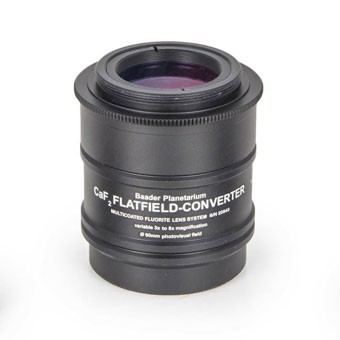
Fluorite Flatfield Converter (FFC) / 3x-8x
# 2458200
€ 730.00 Price excl. German VAT tax (19%): € 613.45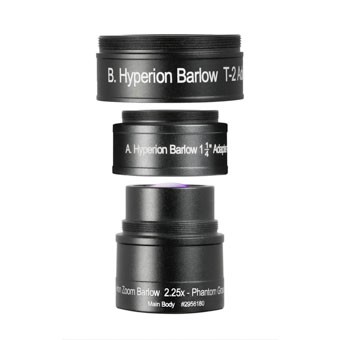
Hyperion Zoom 2.25x Barlow lens
# 2956180
€ 133.00 Price excl. German VAT tax (19%): € 111.76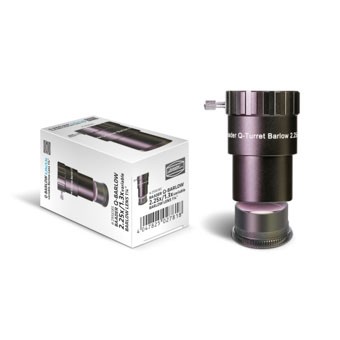
Baader Q-Barlow 1.3x/ 2.25x
# 2956185
€ 55.00 Price excl. German VAT tax (19%): € 46.22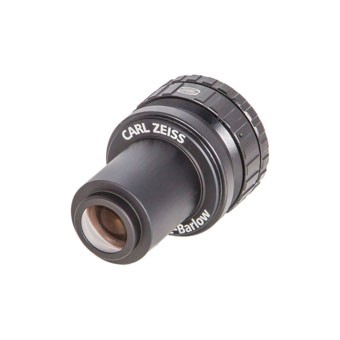
Carl Zeiss 1¼" Abbe Barlow lens 2x
# 1603321
€ 477.00 Price excl. German VAT tax (19%): € 400.84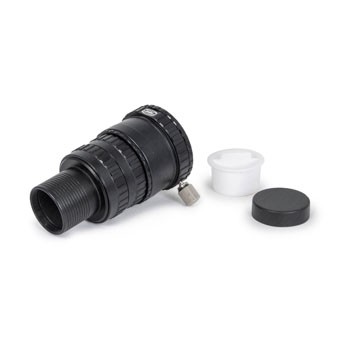
-
ProduktbewertungDieser Telekompressor ist die perfekte Ergänzung für das Bino auf einem SC. Beobachte mit einem Celestron C9,25 mit Großfeldbino.Bis zum Rand Scharf und Kontrastreich.Ich bin Sehr begeistert von der Qualität dieses Telekompressors.Reduziert sogar den Glasweg. Kann man auch vor dem Zenitspiegel einsetzen für noch mehr Brennweitenreduktion mit kleinen Einbußen bei der Randschärfe aber Die Vorteile überwiegen klar. Man Spart sich ein Zweites Teleskop mit Weniger Brennweite. Vielen Dank für dieses geniale Zubehör.Martin Herbst
-
Barlow-LinseSolide Verarbeitung, gute optische Qualität und schnelle Lieferung. Danke.Zeibig
-
Leider dunkel und unscharfIch kombinierte diese Barlow mit weiteren Baader-Okularen wie 18er Ortho und habe weder tagsüber, noch nachts an hellen oder dunklen Gegenständen ein befriedigendes Bild am Teleskop. Der Jupiter wird zum Sonnenbrillenplanet. Das Scharfstellen ist anstrengend, und ich weiss nie, ob es sich nun um den bestmöglichen Fokus handelt. Die Stärkere Vergrößerung funktioniert gut mittels Herausziehen, aber das Bild bleibt unbefriedigend (Linsen sauber). Trotzdem vergebe ich einen Punkt, da die 1,25-Vergrösserung eingeschraubt am Okular sehr gut ist. Den Rest kann ich nur als Okularverlängerung eines Tages vielleicht anwenden.Marc
-
Endlich volle Öffnung mit optimalem Kontrast bei Sonne-H@ möglichIch habe seit Ende Dezember 2021 den Sundancer II mit großem Erfolg und Freude im Einsatz. Zu dem Zeitpunkt musste ich meinen optisch hervorragenden Takahashi FS-128 5"-Fluoritrefraktor mit einer Irisblende auf Anfangs 80mm, später durch den D-ERF auf 100mm abblenden, was auch schon eindrucksvolle H@-Beobachtungen und Aufnahmen ermöglichte. Die damalige Entscheidung etwas mehr für das Zubehör für mehr Öffnung zu investieren (größerer D-ERF) hat sich nun voll ausbezahlt. Die lang ersehnte Telezentrik 4x habe ich mir Ende Juli hier bei Baader erworben.Mit der 4x Telezentrik kann ich nun die volle freie Öffnung von 128mm statt 100mm anwenden und bekomme sogar ein Öffnungsverhältnis von F=32 hin. Durch die daraus resultierende Brennweite von 3.1 Meter auf 4.15 Meter ermöglich jetzt noch eine deutlich feiner Detailerfassung. Wie einige Kunden zuvor schon beschrieben haben bekommt man mit der neuen 4x Telezentrik einen deutlich besseren Kontrast und durch den Öffnungsgewinn auch mehr Helligkeit. Insbesondere erkennt man auf der Chromosphäre noch mehr Einzelheiten und hat ein "kräftigeren" Punch im Bild. Protuberanzen, und gerade eben auch sehr kleine Protuberanzen, sind so fein dargestellt, daß man quasi im Minutentakt Veränderungen verfolgen kann. Ich habe Dazu einige Aufnahmen mit in der Bewertung hinzugefügt (unter anderem eine 2-Minuten gif-Animation sowie 60x-Zeitraffer Videos.) Auf den Bildern sieht man den Größenvergleich zwischen 3x und 4x Telezentrik. Klasse finde ich die jetzt auch größeren Linsenelemente. Als Anregung hätte ich den Vorschlag den kleinen Frontfilter vom Sundancer II gleich eingebaut mitzuliefern oder als Einzelteil (natürlich gegen Aufpreis) mitzuliefern oder erwerben. Man wäre dann flexibler im Einsatz und braucht nur die Telezentrik durch Umschrauben des Sundancer II-Filterkopfes austauschen. Was aber auch praktisch ist, daß man die Telezentrik ohne Filter wie eine sehr hochwertige Barlow (3x oder 4x) für z.B. Planetenaufnahmen verwenden kann.Hab ich bei mir zur Zeit so mit der 3x Telezentrik am Handhaben.Sonst bleibt natürlich der FFC Hierfür das Maß aller Dinge, aber wenn man schon die Telezentrik hat, ist das eine sehr praktische Sache. Sozusagen eine sehr nützliche "Zweckentfremdung". Der große Vorteil an der 4x Telezentrik ist vor Allem daß jetzt Besitzer von Großen Refraktoren 5,6,7 oder gar 8" das Potential von Optik und Sundancer II voll ausschöpfen können. Ich kann nur jedem Besitzer vom Sundancer II (und sogar andere H@-Filter sollen funktionieren) raten die Derzeit 385.- für die 4x Telezentrik zu investieren - es lohnt sich echt. Die Entwicklungszeit wo das Baader Team für die 4x-Telezentrik aufgebracht hat haben sich voll gelohnt, ist ein Klasse Produkt geworden.Chris
-
Super Koma KorrektorSehr gute Qualität und gute KorrekturMarkus
-
TELECENTRIC SYSTEM TZ-4SI was happy to receive my TZ-4S telecentric system with a fast delivery time new product from Baader Planetarium. Later I will get Sundancer II and use this telecentric system for it so it will be easier to get a proper f/10 ratio with my different telescopes. TZ-4S comes with a tool to swap the necessary blocking filters from TZ-3S to TZ-4S. It is possible to use TZ-4S in a similar way as the Barlow lens too. I decided to try it with my Lunt80THa solar telescope. I attached the camera body directly to the TZ-4S T2 tread and other side to the solar telescope's blocking filter. No problems and no odd reflections, which I have noticed sometimes with other brands' products for solar imaging. Overall I am very satisfied with the design and quality of this product.Petrus Kurppa
-
Der passende Komakorrektor für mein NewtonDieser Komakorrektor passt wie die Faust aufs Auge zu meinem 150/750er Newton. Sehr positiv die kurze Bauweise, die Möglichkeit, bei Bedarf noch eine 2" Verlängerung oder Filter anzubringen und der Stoppring.Gottfried
-
TZ-4s am SunDancer IIKürzlich wurde ein Review vom Einsatz des neuen TZ-4s in Kombination mit dem Solar Spectrum Filter präsentiert - hier nun ein Erfahrungsbericht für den eigentlich gedachten Einsatz mit dem SunDancer II: Bis dato habe ich den SunDancer II an meinem 150mm ED APO TRIPLETT mit dem im Lieferumfang befindlichen TZ-3s verwendet. Dies ergab mit dem f7 Refraktor also "nur" f21, also weit von den empfohlenen f30 entfernt, aber die Ergebnisse waren auch damit recht gut. Mit dem TZ-4s erreiche ich nun f28 und konnte das heute am 23. Juli 2023 erstmals an der Sonne testen. Das Seeing war leider nur durchschnittlich, dennoch konnten folgende Schlussfolgerungen getätigt werden: 1) Das ganze System wird gutmütiger, sprich kein Problem mit Newtonringen, wie sie noch leicht bei Verwendung mit dem TZ-3s (trotz Tiltung der Kamera) sichtbar gewesen sind. 2) In Kombination mit dem TZ-4s erhöht sich, erwartungsgemäß, auch der Kontrast - nicht dramatisch, aber bereits im Live-Bild auf dem Laptop erkennbar.Astro Tafelberg
-
Field report: „Baader SunDancer II Telecentric System TZ-4S“In June 2023 I was offered the opportunity to test the new "Baader SunDancer II Telecentric System TZ-4S" (short TZ-4S). Since I had already been working with the classic, long telecentric systems TZ-4 and TZ-3 for 2 years, my interest and curiosity for this TZ-4Short were immediately aroused. I wanted to know how the new system had developed and how it compared to the older TZ-4. My Conclusion: The new "Baader SunDancer II Telecentric System TZ-4S" is a wonderfully compact and high-quality telecentric system that feels at home on both small and large telescopes. Its connection options allow for versatile use. And when stowed away, the system takes up no more space than an eyepiece. To me, the new TZ-4S represents a consistent and logical evolution of its several-year-old predecessor.P. Proske
-
3x TelezentrikDie Fa. Baader bietet seit vielen Jahren für die H-Alpha Fotografie spezielle telezentrische Systeme für den Faktor 3x und 4x an. Ich habe beide Varianten im Einsatz. Als gewissen Nachteil empfand ich die langen Abstände für optimale Bildqualität. Man kann sie durchaus verkürzen, doch ich war mir letzlich nicht sicher, ob ich damit wirklich keine Qualitätseinbußen erzeugte. Das neue System ist extrem kompakt, den langen "Hebelarm" am Okularauszug gibt es nun nicht mehr. Die optische Qualität ist wie gewohnt sehr gut.Michael Karrer
-
Perfect for f/7 Telescopes of Aperture 7" or LessAt the Hyperion Zoom's 8mm setting, this Barlow provides the maximum magnification for f/7 telescopes of aperture 7" or less. For moon, planetary, and double star viewing, start at 24mm and zoom in until reaching the atmosphere-limited optimal magnification for the evening. So much better than swapping out Eyepieces! Barlow isn't necessary for scopes of f-ratios higher than f/7.0oninoyakamo
-
nicht günstig - aber jeden Cent wert!Üblicherweise werden mit einer Barlow die Planeten abgelichtet. Leider ist das Wetter sehr unkooperativ und so habe ich seit dem Kauf der FFC nur ein deep sky Bild von M56 bei ziemlich schlechtem seeing aufnehmen können. Dennoch bin ich hellauf begeistert! An meinem FLT 132/925 erreiche ich bei 3x Vergrößerung 2,8m Brennweite. Die DSPro2600C habe ich 2x2 gebinnt und so eine Auflösung von 0,56 artsec/pixel erhalten. Aufnahmedaten: 26x3min, Gain=400, HCG, 2x2bin, 12.9.2022, 40 Flats. Wie man sehen kann, ist das Bild auch an den Rändern wirklich sehr gut geebnet. Bei einer Planetenaufnahme sieht man das in der Regel nicht, da das Planet ja nur im Zentrum abgebildet wird. Den Sternhaufentest hat mein FFC mit Bravour bestanden und nun muss auch endlich das Wetter wieder besser werden!Joachim D.
-
UAG II and visual observation with EdgeHD 8''My experience with UAG II is positive. I am a visual observer owning a Celestron EdgeHD 8'' and with its 2000mm focal length and f10 aperture, it is very difficult to observe large emission nebula objects. With the UAG II, however, the focal length is cut in half and the improved aperture is immediately visible in the eyepiece. One can enjoy observing nebulae like North America or the beauty of the Andromeda galaxy in a wide field. Yes, the optical quality of the image will deteriorate, stars especially near the edge of the field of view suffer from coma, but that is to be expected. But in visual observation, the positives of a wider field of view outweigh the negatives.Mirom
-
Klein aber feinPreisgünstige Barlow-Linse die sich mehrfach einsetzen läßt. Ich nutze eigentlich nur den vorderen Linsenteil, der sich ideal in meine Okularkameras Skyris & NexImage 5 einschrauben läßt. Beim Mond vielleicht übertrieben aber sie soll diese Saison bei der Jagd auf Jupiter und Saturn helfen.Helmut
Most Recent Product Questions-
Rated: 0
 5/4/2024 7:05 PM
Baader Wide-T-Ring Canon R (for Canon R bajonet) with D52i to T-2 and S52
5/4/2024 7:05 PM
Baader Wide-T-Ring Canon R (for Canon R bajonet) with D52i to T-2 and S52
You have a lot of documentation on how using this with an eyepiece but none that I can found if I want to directly connect my camera to the eyepiece holder without going through the eyepiece itself.
* In this case is there a minimal extension distance to respect between the camera and the (empty) eyepiece holder? (with eyepiece for full frame hybrid you say 95mm)
* What is the impact of the extension distance on the magnification? (with eyepiece equivalent focal length is Feq=Ftel*(d/Feye-1)
Danke!Is Answered? Yes (1 answer)
Answer rated: 1Adaptation to the eyepiece is pretty straight-forward: To use the maximum aperture, remove the T-thread from the T-ring and insert 2" / S52 Nosepiece # 2958551. Then you can insert it into your eyepiece holder, just like an eyepiece.
You can also use the T-thread of the adapter and use Baader 2" / T-2 (M48) nosepiece with Safety Kerfs # 2458130 or Baader 1¼" T-2 nosepiece with Safety Kerfs # 2458106, if your telescope hasn't got a T-thread (M42x0.75) on its own (some telescope have got one integrated). This is fine for cameras up to APS-C (or MFT, if you want to use the 1¼" nose piece).
For a full frame camera, T-2 can cause vignetting, and you should use the S52 / M48 adapter #2958552 plus Baader M48 extension tube 40 mm / 2" nosepiece with Safety Kerfs #2958640 as adapter to the 2" eyepiece clamp. This way, you can use the full aperture.
The distance between camera and sensor doesn't change the focal length, as you are using the native focal length of your telescope. So, on a telescope with a focal length of 1000mm, the camera sensor has to be placed 1000 mm behind the objective. Only then you'll see a sharp image.
Caution: If you are using a star diagonal, you should remove it for photography. A 2" star diagonal is approximately 10-11 cm long, so you may need a mechanical extension to reach focus without it, if the focuser doesn't extend enough. We have extension tubes for T-2 (e.g. Baader T-2 / 40 mm Extension Tube # 1508153); for M48, you can stack e.g. some M48 extension tube 40 mm / 2" nosepieces #2958640.
The backfocus of your telescope or the camera adaptation in general should be mentioned in the manual of our telescope. If you can insert an eyepiece without a star diagonal into your focuser and see a sharp image, you probably don't need an additional extension.Answer by: Baader Web Team (Admin) on May 6, 2024 9:55:00 AMRated: 0 5/4/2024 2:08 PM
TurboFilm 127 x 51 cm, ND 0,1
5/4/2024 2:08 PM
TurboFilm 127 x 51 cm, ND 0,1
How thick is the TurboFilm? Thanks!Is Answered? Yes (1 answer)
Answer rated: 0Film thickness is about 10 micron.Answer by: Baader Web Team (Admin) on May 7, 2024 10:51:00 AMRated: 1 4/27/2024 6:29 AM
Baader S52 dovetail Camera-Adapter for Wide-T-rings (optical height: 2 mm)
4/27/2024 6:29 AM
Baader S52 dovetail Camera-Adapter for Wide-T-rings (optical height: 2 mm)
My Baader S52 adapter included a a thin shim ring approx 0.5mm thick. Does this shim need to be installed to maintain the optical length of 13mm?Is Answered? Yes (1 answer)
Answer rated: 1The optical height of 13mm is only the UFC filter base. As soon as you add an additional adapter, such as the S52 camera adapter with an optical height of 2mm, the optical height changes accordingly to 15mm. This height is always without the 0.5mm thick intermediate ring. This is only required if you need particularly precise backfocus requirements and you are missing 0.5mm for perfect backfocus, for example. Otherwise, please always use the adapters without additional intermediate rings.Answer by: Baader Web Team (Admin) on Apr 30, 2024 9:29:00 AMRated: 0 4/23/2024 12:24 AM
2" BDS-RT Baader Diamond Steeltrack Focuser
4/23/2024 12:24 AM
2" BDS-RT Baader Diamond Steeltrack Focuser
Is there one that will fit the Celestron Omni 120 xlt. Thank you for your response.Is Answered? Yes (1 answer)
Answer rated: 1For the OMNI 120XLT refractor we unfortunately doesn´t have an adapter. Only those adapters are available, I´m sorry:
https://www.baader-planetarium.com/en/catalogsearch/result/?q=rt-adapter&___from_store=de
Answer by: Baader Web Team (Admin) on Apr 23, 2024 10:14:00 AMRated: 0 4/21/2024 7:18 AM
Glasspathcorrector 1:1,70 for Baader-Binoviewer with T-2 thread (MaxBright II® and MaxBright®)
4/21/2024 7:18 AM
Glasspathcorrector 1:1,70 for Baader-Binoviewer with T-2 thread (MaxBright II® and MaxBright®)
I managed to get the focus with my hershel baader and my TS-Optics RFT 6" f/5.9 refractor , but I am forced to take the glasspath of my barlow VIP and put it on my bino and the super it works.
I would like to know which glasspath to take to have the same magnification factor but no more. I use it with a pair of panoptic 24 MN and I would like to keep the entire disc in the bino.
THANK YOU FOR YOUR REPLYIs Answered? Yes (1 answer)
Answer rated: 0The Glasspathcorrector 1:2,60 for Baader-Binoviewer # 2456317 is very similar the Barlow lens in the VIP barlow with only a slightly different optical design to achieve the colour correction. You can install it the same way as the lens element of the VIP and should get the same magnification.
Depending on the version of your Herschel prism, there may be even shorter adaptations, so that you can use lower magnifications - we have recently (spring 2024) updated the manual of our Herschel wedge # 2956510 to better show the use with old and new models of our Herschel wedge.Answer by: Baader Web Team (Admin) on Apr 22, 2024 9:18:00 AM© 1966 - 2024 Baader Planetarium GmbH: Zur Sternwarte - 82291 Mammendorf - Germany - Tel.: 0049-8145/80890 - kontakt (at) baader-planetarium.deBaader Planetarium GmbHOur company exists now for more than 50 years. In this time, more than 15.000 Baader Planetariums (the first patented product of our company) help all over the world to give students an understanding of astronomical correlations. In our own manufactory, more than 500 observatory domes have been produced and delivered turnkey-ready. Instruments and telescope accessories from "Baader" are known for their high qualities by many astronomers and universities. We consider it our duty and obligation, not only to sell telescopes, but an indivdually selected telescope system, that brings you a lifetime of joy.








